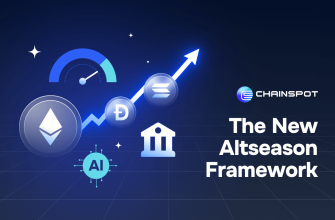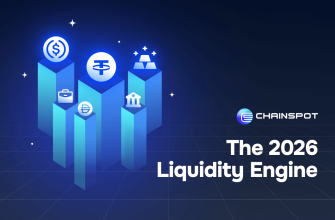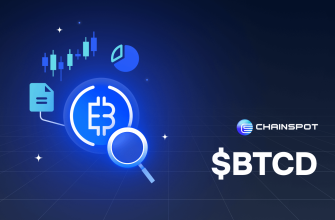- 1) What Hyperliquid actually is (and why traders care)
- 2) The matching engine: price–time priority without the mystery
- 2.1 The book
- 2.2 Order types you’ll actually use
- 2.3 Partial fills and queue position
- 3) Cost model and funding: the silent PnL drivers
- 4) Margin 101: the math that prevents (or triggers) liquidations
- 4.1 Definitions
- 4.2 Mark price and index price
- 4.3 Bankruptcy and liquidation prices
- 5) The liquidation path: what actually happens under the hood
- 6) From zero to first trade (with adult hygiene)
- 6.1 Setup & funding
- 6.2 First session checklist
- 6.3 Journal template
- 7) Maker 101: standing in the book without getting steamrolled
- 7.1 Why maker first
- 7.2 Basic maker frames
- 7.3 Fill quality KPIs
- 8) Taker 101: when to pay up (and how not to bleed)
- 9) Funding and basis: the quiet carry you should measure
- 10) Reading the book like an adult (context, not tea leaves)
- 11) Risk engine edge cases (and how to avoid being content)
- 12) Event trading: do’s and don’ts
- 13) On-chain hygiene (your ops are part of your edge)
- 14) Playbooks you can copy tomorrow
- 14.1 Conservative day maker
- 14.2 Swing brackets
- 14.3 Funding capture micro-carry
- 14.4 Panic-hedge (macro tape breaks)
- 15) Common mistakes (learn them once)
- 16) The “every session” checklist (print this)
- 17) Glossary without fluff
- 18) Closing: trade like an operator, not a tourist
TL;DR:
Hyperliquid is an on-chain, order-book L1 built for perpetual futures. Think “CEX-level matching” with on-chain settlement and transparent risk controls. To trade it well you need four things: (1) a clear mental model of price–time priority and order types, (2) a working grasp of margin math (initial, maintenance, mark price, bankruptcy price), (3) a step-by-step liquidation map (partial → full → insurance fund → ADL), and (4) execution discipline (maker quoting, reduce-only brackets, funding awareness, event timing). This guide gives you a practical playbook—from first deposit and gas setup to advanced maker strategies—plus checklists you can stick above your screens. Whenever you need to move collateral or gas between chains, keep your edge: swap + bridge in one click and earn cashback + referral rewards with Chainspot → https://app.chainspot.io
1) What Hyperliquid actually is (and why traders care)
Hyperliquid (HL) is an on-chain order-book L1 optimized for perpetual futures. Unlike AMM perps, it uses a central limit order book (CLOB) with price–time priority, partial fills, and a risk engine that enforces margin, funding, and liquidations. You get:
-
Deterministic matching (limit, market, post-only, reduce-only, IOC/FOK behaviors).
-
Transparent risk (mark price, maintenance tiers, insurance fund, circuit breakers/ADL if needed).
-
On-chain receipts: fills, liquidations, and risk events live on a ledger you can audit.
Why this matters: AMM perps are simple but tax you with slippage. CEXs are fast but opaque. HL aims for the “CEX feel” while keeping a verifiable trail. If you’re serious about perps—making markets, capturing funding, or trading events—understanding HL’s order book + liquidation path is core edge.
Routing tip: Your first constraint won’t be alpha; it’ll be logistics. You need stables and gas on the right chain right now. Don’t chain three swaps and two bridges. Use Chainspot to route swap+bridge in one click and stack cashback (referrals too): https://app.chainspot.io
2) The matching engine: price–time priority without the mystery
2.1 The book
A price ladder: bids below, asks above. Best bid/ask define the inside market. Orders join a FIFO queue at each price level—first in, first filled.
2.2 Order types you’ll actually use
-
Limit: “Buy/Sell at price P or better.” Joins the book if not immediately filled.
-
Post-Only: Must add liquidity (maker). If it would cross the spread, it cancels or price-improves to remain a maker order.
-
Reduce-Only: Can only decrease (or close) your position. Great for bracket exits and preventing “flip” accidents.
-
IOC (Immediate-or-Cancel): Fill what you can instantly; cancel the rest.
-
FOK (Fill-or-Kill): Fill entire size now or cancel.
-
Trigger / Stop–Limit: Activates when a reference price (often mark/last) hits a threshold.
Pro usage pattern:
-
Enter with limit or post-only (maker first).
-
Pre-stage reduce-only take-profits and stop-outs (brackets).
-
For emergency exits in thin books, IOC can protect you from walking price too far.
2.3 Partial fills and queue position
You can be 20% filled and keep 80% resting. Cancel/replace can reset your queue spot; use it sparingly. Maker work is a patience game.
3) Cost model and funding: the silent PnL drivers
Trading PnL is more than entries/exits:
-
Spread/slippage: Maker earns the spread; taker pays it. This alone can decide your month.
-
Funding: Periodic payments between longs/shorts to tether perp price to index. Positive funding = longs pay shorts; negative = shorts pay longs.
-
Inventory carry: If you quote both sides, inventory drifts in trends. You must cap exposure or hedge elsewhere.
Rules for grown-ups:
-
Be a maker by default, a taker only by exception (news, stops, obvious imbalances).
-
Track net funding per symbol. A tight maker strategy that quietly collects funding pays the rent while you wait for fat pitches.
4) Margin 101: the math that prevents (or triggers) liquidations
4.1 Definitions
-
Notional = |position size| × price.
-
Initial Margin (IM): minimum to open/expand a position.
-
Maintenance Margin (MM): minimum to keep it open.
-
Equity = collateral + unrealized PnL (UPnL).
-
Margin Ratio = Equity / Notional (or venue-specific variant). Fall below a threshold → liquidation.
Many venues offer isolated (risk siloed per position) and cross (risk pooled across positions). Cross is efficient but dangerous if you don’t respect correlations.
4.2 Mark price and index price
Liquidations usually trigger on mark price, not last trade, to reduce manipulation. Mark comes from an index (basket of spot prices) + basis model. Your “I’m safe because the last trade is far away” excuse does not matter; the mark is your reality.
4.3 Bankruptcy and liquidation prices
-
Bankruptcy price: where your loss equals your initial margin—beyond this, the venue/insurance eats it.
-
Liquidation price: where maintenance conditions fail. Engines will try partial liquidation first (reduce size), then full if needed. If the market cannot absorb, ADL (auto-deleverage) can unwind opposing traders with high leverage/PNL rank.
Your job: know your liquidation band before you enter. If you can’t survive a 2–3× your daily ATR move, your leverage is fantasy.
5) The liquidation path: what actually happens under the hood
-
Breach: Margin ratio dips below maintenance threshold at mark.
-
Partial liquidation: Engine closes a fraction (often to a safer leverage tier). Fees/penalties may apply; your size shrinks, risk lightens.
-
Full liquidation: If partial doesn’t restore health, remaining position is closed.
-
Insurance fund: If closes below bankruptcy, the shortfall hits the fund.
-
ADL: If the fund can’t cover, winners with the highest leverage/PNL are auto-reduced to backstop. It’s rare, but real.
Why cascades happen: The first wave of liquidations crosses the spread, shifting mark, which drags more accounts below maintenance, and so on. Thin books + synchronized stops = “down 10% in 10 seconds.” Flip this logic for short squeezes.
Trader’s defense:
-
Modest leverage (survive wide wicks).
-
Reduce-only brackets placed before chaos.
-
Avoid event minutes (funding snapshots, CPI/FOMC, major listings).
-
Keep gas + stables on two chains so you can top up or hedge in time. If you don’t have them in place, route fast with Chainspot: https://app.chainspot.io
6) From zero to first trade (with adult hygiene)
6.1 Setup & funding
-
Wallet: use a battle-tested extension + hardware signer for size.
-
Gas & collateral: pre-fund native gas and a stable buffer on the HL side you’ll use.
-
Routing: if your funds are scattered (ETH on L2, USDC on SOL, etc.), compress steps via Chainspot (swap+bridge in one flow, cashback + referrals).
6.2 First session checklist
-
Create a dedicated browser profile; no random extensions.
-
Two-factor discipline where relevant (and never share keys).
-
Open one small position; practice: place limit entry, set reduce-only TP and SL, cancel/replace to feel queue effects.
-
Measure latency and fill quality; note spread behavior around funding windows.
6.3 Journal template
Date, symbol, thesis, entry/exit, order types, fills, slippage, funding impact, what you’d change. Traders who write win more because they stop repeating dumb things.
7) Maker 101: standing in the book without getting steamrolled
7.1 Why maker first
-
You get paid the spread (sometimes rebates too).
-
You control where you engage the market.
-
You avoid taker taxes that kill PnL in chop.
7.2 Basic maker frames
-
Symmetric ladder: post small clips equally above/below mid; tighten during calm, widen during vol.
-
Event fade: after a burst, place narrow ladders that assume mean reversion—reduce exposure fast if it keeps trending.
-
Funding tilt: if funding is strongly positive, you can lean slightly short with tight ranges (and vice versa), collecting a trickle while staying small.
Controls:
-
Max inventory per side per symbol.
-
Daily PnL stop (hard—don’t negotiate with yourself).
-
No making in the first minute of macro news.
7.3 Fill quality KPIs
-
Fill ratio (posted vs executed).
-
Average hold time (shorter during vol).
-
Net slippage (should be small/positive for makers).
-
Quote time percentage (are you actually in the book?).
If your stats are ugly, your quotes are in bad places or you’re over-posting during the wrong minutes.
8) Taker 101: when to pay up (and how not to bleed)
-
Breakout acceptance: when multiple tests fail to mean-revert, you pay to join.
-
Stop execution: you must ensure you exit before liquidation; taker is the insurance premium.
-
Latency games: if you must cross, do it once, decisively, not in five tiny nibbles that move price against you.
IOC protects you from walking the book. FOK ensures you don’t get tiny crumbs. Always convert to reduce-only when you’re exiting.
9) Funding and basis: the quiet carry you should measure
-
Funding turns perps into a carry trade. If you believe fair value is stable and funding is extremely positive, being short (flat delta via spot hedge if needed) earns carry—until it doesn’t.
-
Basis (perp vs index) tells you whether the market is over-eager (premium) or fearful (discount). Extremes precede mean reversion or regime shifts. Trade small and read the tape.
Rule: never open fresh leverage right before a funding snapshot. That’s when professionals step away and tourists get taxed.
10) Reading the book like an adult (context, not tea leaves)
-
Inside spread: tight → healthy market; wide → step back or quote wider.
-
Depth buckets: real size rests in odd places; watch for levels that refill (icebergs).
-
Imbalance: one-sided book can be bait. Only trust it if trades follow through, not just quotes.
Combine book data with trade prints and CVD (cumulative volume delta): rising price + negative CVD = absorption; don’t chase.
11) Risk engine edge cases (and how to avoid being content)
-
Mark vs last: your stops should reference the trigger price the venue uses; don’t anchor to the last trade.
-
Volatility halts/circuit breakers: if an asset trips risk limits, expect wider spreads after the resume. Shrink size or skip the first few minutes.
-
ADL exposure: high-leverage/high-PNL shorts often get hit first in up-crashes; longs in down-crashes. Trim leverage before the crowd learns this the hard way.
12) Event trading: do’s and don’ts
Do
-
Know the time and unit (UTC) of releases.
-
Scale-in before the event or wait after the first sweep; either way, avoid the exact minute.
-
Use reduce-only brackets placed in calm.
-
If you hedge macro with external markets (e.g., prediction markets for CPI/FOMC/ETF), pre-fund them hours before.
Don’t
-
Open fresh leverage in the 60 seconds before funding or major prints.
-
Chase a 5-candle run with market orders and no exit plan.
-
Assume the first move is right; it often isn’t.
13) On-chain hygiene (your ops are part of your edge)
-
Segregate: one hot wallet for trading, one hardware-secured vault for profits.
-
Approvals: use spend limits where applicable; revoke periodically.
-
Gas discipline: keep a native gas buffer; top up before you need it.
-
Routing: every cross-chain move is a potential edge leak. Use Chainspot to compress to one flow and capture cashback so your effective fees trend to zero on volume → https://app.chainspot.io
14) Playbooks you can copy tomorrow
14.1 Conservative day maker
-
Quote a narrow ladder ±2–4 ticks around mid during calm; widen in vol.
-
Cap inventory at 0.3–0.5× daily ATR notional.
-
Walk away during event minutes.
-
Daily P/L stop (e.g., −0.8R).
14.2 Swing brackets
-
Enter with limit in areas you’ve mapped (prior day value area edges).
-
Pre-place reduce-only TP/SL at 1.5R/−1R.
-
Hold only through one funding snapshot; re-evaluate.
14.3 Funding capture micro-carry
-
When funding is > +X bps for 2+ intervals, lean short with tiny size and tight maker bands; reverse for negative funding.
-
Exit if funding compresses or price trends beyond your exposure cap.
14.4 Panic-hedge (macro tape breaks)
-
If a shock hits (tariffs, hack, black swan) and you’re long beta, immediately tighten leverage; if needed, cross-hedge with external instruments (e.g., “No” on a catalyst market) you pre-funded.
-
Don’t forget to rebalance collateral via a cheap one-click route; overpaying 40–60 bps in chaos defeats the purpose of hedging.
15) Common mistakes (learn them once)
-
Trading event minutes with leverage and no brackets.
-
Infinite approvals, sloppy wallet hygiene.
-
Chasing with market orders instead of using IOC/FOK intelligently.
-
Ignoring mark price while bragging about the last trade.
-
Over-posting tiny orders that reset your queue for no reason.
-
No gas or stables on the right chain when you need to top up.
Tape these above your screen.
16) The “every session” checklist (print this)
-
News/data calendar checked; funding snapshot times noted.
-
Gas + stables pre-funded on target chain(s).
-
Chainspot bookmark ready for swap+bridge in a pinch (cashback + referrals).
-
Max leverage set; liquidation band acceptable.
-
Maker ladders staged; reduce-only brackets placed.
-
Daily loss stop defined (non-negotiable).
-
Journal open.
17) Glossary without fluff
-
ADL: Auto-deleverage—engine closes top-PNL/high-leverage opposing traders if insurance is insufficient.
-
Basis: Perp price − spot/index.
-
CLOB: Central limit order book.
-
CVD: Cumulative volume delta (buys − sells).
-
Equity: Collateral + UPnL.
-
IM/MM: Initial/Maintenance margin.
-
IOC/FOK: Immediate-or-Cancel / Fill-or-Kill.
-
Mark price: Reference used for margin/liq; often derived from index + basis model.
-
Post-Only: Must add liquidity; cancels if it would cross.
-
Reduce-Only: Can only shrink your position.
-
UPnL: Unrealized profit and loss.
18) Closing: trade like an operator, not a tourist
Hyperliquid gives you a rare combo: an on-chain book that feels like a pro venue and a risk engine that rewards discipline. Your edge isn’t a secret indicator—it’s the boring stuff pros do every day:
-
Enter with limits, exit with reduce-only brackets.
-
Quote like a maker; take only when it’s worth it.
-
Size so liquidations are theoretical, not inevitable.
-
Respect funding and event minutes.
-
Keep operations tight—gas, collateral, approvals, and routes.
And every time you need to move funds so the trade can happen where it should—make the logistics cheaper than everyone else’s:
Swap + bridge in one click, let the router choose the cheapest path, and earn cashback (plus referrals for your crew) with Chainspot: https://app.chainspot.io
Stay safe. Trade clean. See you in the book.











